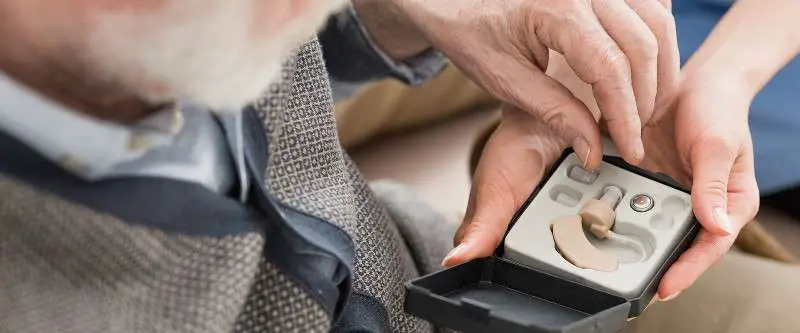Introduction
Delving into the intricate domain of audiology, sensorineural hearing loss (SNHL) emerges as a common yet profound hearing impairment. Predominantly affecting adults around the globe, it usually manifests as damage to the inner ear or auditory nerve. Over time, scientific and technological progress has significantly contributed to the comprehension, treatment, and even prevention of SNHL. This article aims to uncover cutting-edge research and technological advancements, revolutionizing the way we approach SNHL.
In the core of this exploration, we will unearth the potential of gene therapy, providing new treatment avenues for SNHL where traditional methods fall short. We will also navigate through ongoing clinical trials, emphasizing breakthroughs that hold promise in tackling this challenging ailment. We will then discuss cochlear implants, a tried-and-true solution for SNHL, continuously evolving through relentless research. Additionally, the role of antioxidants in preventing SNHL will be examined, introducing a nutritional perspective to the broader discussion. Lastly, we will delve into the exciting convergence of nanotechnology and SNHL, a burgeoning field that is stirring both curiosity and hope.
Each of these areas showcases the potential future of SNHL treatment and prevention, giving adults affected by this condition renewed optimism. Join us on this enlightening journey, as we probe into the innovative solutions for sensorineural hearing loss that are reshaping the audiology landscape.
AMZ-Lexie Lumen Self-Fitting OTC Hearing Aids
Experience the Ultimate Sound Quality with Lexie Lumen self-fitting OTC hearing aids. These remarkable devices utilize dual microphones to deliver crystal clear sound, immersing you in a world of auditory excellence. Say goodbye to communication struggles in public spaces or on phone calls, as our Telecoil functionality directs speech directly to your hearing aids via an induction loop system. Rediscover the joy of hearing with unmatched clarity and precision.
Embrace an Active Lifestyle with Lexie Lumen hearing aids. Our cutting-edge sweatproof technology, including Nano coating, safeguards against moisture damage, allowing you to wear your hearing aids during outdoor activities like walks, runs, and open-air events. With Lexie, you can live life to the fullest without compromising on the quality or lifespan of your devices. Don’t let hearing loss hold you back—experience the freedom of superior hearing with Lexie Lumen self-fitting OTC hearing aids.
Gene Therapy in Treating Sensorineural Hearing Loss: Unfolding Current Research
Gene therapy has been identified as a potential game-changer in the treatment of sensorineural hearing loss for some time now. It seeks to repair or replace the defective genes that cause hearing loss, tackling the issue at its root.
Recent investigations in this domain have yielded encouraging results. A study led by Géléoc and team illustrated the effective use of gene therapy in restoring hearing in a mouse model of human genetic deafness. While transitioning from mice to humans is a vast leap, this research has ignited a beacon of hope for the potential application of gene therapy in treating specific forms of SNHL.
Moreover, advancements in CRISPR-Cas9 technology, a gene-editing tool, have broadened the horizons for treating SNHL. This groundbreaking technique facilitates precise genome editing, potentially enabling scientists to rectify mutations leading to sensorineural hearing loss. However, the intricacy of the human ear and the myriad genes involved in hearing render the journey to human trials arduous. Yet, the promising prospects of this approach keep researchers and patients optimistic about the future.
Current Clinical Trials: Innovations in Sensorineural Hearing Loss
A plethora of clinical trials globally is focused on uncovering and developing novel treatments for sensorineural hearing loss. These trials are investigating a wide array of strategies, spanning drug therapies to unique surgical interventions.
One such trial is examining the effectiveness of FX-322, a drug designed to promote the growth of sensory hair cells in the inner ear. Early results indicate that this drug could potentially restore some level of hearing in individuals with SNHL.
Audion Therapeutics is conducting another trial testing a similar approach, employing a drug named LY3056480. This drug also aspires to regenerate sensory hair cells in the inner ear, an innovative approach to treating SNHL. Preliminary results show promise, with further testing required to establish safety and efficacy.
Clinical trials like these exemplify the unwavering pursuit of innovative treatments for sensorineural hearing loss. With each successful trial, we inch closer to more effective solutions for those grappling with this challenging condition.
Tinnitus: why it’s still such a mystery to science
Ongoing Research in Cochlear Implants: Advancements Unveiled
Cochlear implants have consistently served as an effective solution for individuals grappling with severe to profound sensorineural hearing loss. These innovative gadgets circumvent the damaged inner ear, transmitting electric signals directly to the auditory nerve. However, the quest for perfection never ceases, and ongoing advancements persistently enhance the functionality and usability of these life-altering devices.
Among these advancements, the most noteworthy is the evolution towards fully implantable cochlear implants. Unlike traditional implants requiring an external sound processor, fully implantable devices are entirely concealed under the skin. This not only renders aesthetic benefits but also alleviates many of the daily hassles associated with external components.
Further, research aimed at enhancing sound quality and speech comprehension is underway. For instance, initiatives to devise new processing strategies strive to augment the clarity and naturalness of sound conveyed by the implants. This involves algorithms that closely emulate the functionality of the healthy inner ear and can enhance performance in noisy environments.
While cochlear implants do not cure sensorineural hearing loss, these enhancements are significantly improving the quality of life for those who depend on them. As research progresses, the future of cochlear implants appears brighter than ever.
The Role of Antioxidants in Preventing Sensorineural Hearing Loss
The potential involvement of antioxidants in preventing sensorineural hearing loss has piqued scientists’ interest. This perspective proposes that by counteracting harmful free radicals in the body, antioxidants might safeguard the delicate structures of the inner ear from damage.
Several studies have drawn a correlation between higher antioxidant intake and lower incidences of hearing loss. For instance, a study published in the Journal of Nutritional Biochemistry stated that regular consumption of antioxidants such as vitamin C, vitamin E, and beta-carotene correlated with a reduced risk of SNHL.
However, it is critical to acknowledge that while antioxidants might play a role in preventing hearing loss, they are not a panacea. Sensorineural hearing loss can be triggered by various factors, including genetics and exposure to loud noise, which cannot be mitigated solely by antioxidants.
Discover the Secrets of Hearing Loss
Nanotechnology and Sensorineural Hearing Loss: An Emerging Field of Exploration
Nanotechnology, the manipulation of matter at an atomic and molecular scale, is an emerging field with potential applications in treating sensorineural hearing loss.
One captivating area of study is utilizing nanoparticles for drug delivery to the inner ear. This approach could potentially surmount one of the biggest challenges in treating SNHL: delivering drugs past the body’s natural barriers to the inner ear where they can exert their effects.
Another promising research direction involves using nanofibers to enhance cochlear implants. By making the implant electrode thinner and more flexible, nanofibers might reduce damage to the delicate structures of the inner ear during implantation.
Although nanotechnology’s role in treating sensorineural hearing loss is still in its infancy, it presents exciting possibilities. With continued research and development, nanotechnology could play a crucial role in the future of SNHL treatment.
Conclusion
The odyssey of understanding and addressing sensorineural hearing loss is intricate and challenging, yet infused with hope and optimism. From the inspiring developments in gene therapy, harnessing the potential of CRISPR-Cas9 technology, to the intriguing research on the role of antioxidants, our understanding of SNHL is continually evolving.
Clinical trials globally are forging innovative pathways, investigating drug therapies like FX-322 and LY3056480 that could potentially stimulate the growth of sensory hair cells, potentially revolutionizing the treatment paradigm of SNHL. The ceaseless advancements in cochlear implants, particularly the evolution towards fully implantable devices, are enriching the lives of numerous patients, rendering this technology more accessible and user-friendly than ever before.
The convergence of nanotechnology and SNHL is a captivating area, revealing promising applications such as nanoparticles for precision drug delivery and nanofibers for advanced cochlear implants. As research marches on, we may witness a shift from merely managing SNHL to potentially reversing or even preventing it.
Although the journey is ongoing, these developments light a beacon of hope for millions of adults worldwide living with sensorineural hearing loss. Through the collective endeavors of scientists, clinicians, and patients alike, the future of SNHL treatment appears bright, marked by innovation, empathy, and a steadfast commitment to enhancing the quality of life for those afflicted by this condition.

Harmonizing Life with Mixed Hearing Loss: A Global Perspective
Dive into the complexities of Mixed Hearing Loss with our comprehensive guide, exploring diagnosis, treatment options, and practical tips for daily management

Harmonizing Silence and Sound: Mastering Mixed Hearing Loss
Dive into the complexities of Mixed Hearing Loss with our comprehensive guide, exploring diagnosis, treatment options, and practical tips for daily management.






